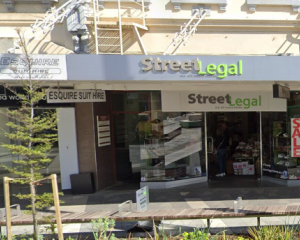
Finance Minister Grant Robertson said at the weekend the falling confidence in recent indices was a matter of perception.
The ANZ index showed the perception was quickly becoming a reality.
When businesses were asked what they thought about business conditions in the year ahead, a net 39% of businesses were pessimistic - a change of 12 points that puts confidence back at November lows.
ANZ senior economist Liz Kendall said business confidence had been falling since June last year as economic headwinds had strengthened.
Business sentiment was only one input into the decision-making driving the economy.
Firms' expectations of their own activity were a better gauge of future gross domestic product (GDP) economic growth, she said.
In the June quarter index, firms' views of their own activity dipped from 14 points to nine, still remaining positive. Looking at own activity by industry, retailers remained the least positive at six points, and manufacturers were the most upbeat at 16.
Every three months ANZ asked firms the most important problem they were facing to provide colour on what might be driving the headline survey results, Ms Kendall said.
In June, the lack of skilled employment was the most prevalent problem (28%), particularly among construction, manufacturing and services firms.
Regulation was the second most important at 17% - the highest reading for the problem since data was first collected in 2012.
Competition and low turnover were the other top-rated problems at 13% and 10% respectively.
While volatility should be borne in mind, it was notable commercial construction intentions dropped sharply in June. Intentions had been falling since late 2016, despite still-low interest rates. Credit availability might be a factor, she said.
Responses from retailers suggested little imminent Consumer Price Index inflation pressure - the official measure.
The sector's pricing intentions had rebounded off lows but remained in recent ranges.
Expected profitability fell to -17, suggesting a limited ability to pass on cost increases in the face of strong competition. The latest low reading from retailers about their own activity outlook and business confidence suggested a mismatch between confidence levels between consumers and retailers, Ms Kendall said.
Independent economist Cameron Bagrie said the falling trend in confidence was starting to look worrying.
Some of the fall would be seasonal as confidence tended to weaken in winter, he said.
''The economy is now clearly tracking around 2% and not 3%. Today's survey cements more of the same. In fact, growth is looking lower.''
The continued fall in activity expectations out of the service sector was perplexing as the sector was not affected by government policy changes. Something more broad was going on, he said.
The difference between 3% and 2% growth was an $800 million potential loss of tax revenue.
''The Treasury is expecting growth to rebound to 3% to 3.5%. That's a country mile off.
''We need a solid-looking economy to deliver on the social policy agenda. That solidity is looking shaky.''












